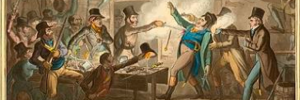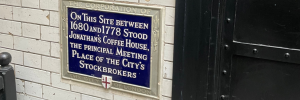The term “mudlark” originally referred to the impoverished children and adults who scavenged the muddy shores of the River Thames in London during the 18th and 19th centuries. They looked for anything of value that they could sell or use to survive, ranging from pieces of coal that had fallen from boats, to scraps of iron, copper nails, old ropes, bones for making buttons, and even discarded food.
Mudlarking Today
In the modern context, mudlarking has evolved into an amateur archaeological activity, where history enthusiasts comb the Thames’ foreshore at low tide in search of historical artefacts. London, with its rich past stretching back to Roman times, is a treasure trove waiting to be discovered. Each ebb and flow of the Thames can reveal a wealth of history, with objects spanning millennia occasionally being found.
Many mudlarks are history buffs who are drawn to the detective work of identifying the objects they find, which can range from fragments of Roman pottery to Victorian clay pipes, medieval coins to Georgian buttons, and a myriad of other items, each with a story to tell about London’s past. There’s also the thrill of making a significant discovery – for example, some mudlarks have even found rare and valuable items like medieval pilgrim badges and ancient Roman jewellery.
Although mudlarking might seem like a free-for-all, there are regulations in place to protect England’s historical heritage. The Port of London Authority issues permits for mudlarking and there are rules about what can be taken, where you can search, and what must be reported to the authorities. This ensures that any items of significant historical interest can be properly documented and preserved.
Connecting with London’s Past
Mudlarking can be seen as a living connection to London’s past, allowing us to physically touch history and to glimpse the city’s evolution through the everyday objects that its inhabitants have left behind. It’s a tangible, muddy reminder that London’s history is not just confined to museums and textbooks, but is embedded in the very banks of the River Thames.
Mudlarking is also an egalitarian pursuit. The River Thames does not discriminate between a professional archaeologist and a casual visitor. Its muddy shores can reveal treasures to anyone who takes the time to look. This creates a sense of community among mudlarkers, with many participating in online forums and social media groups to share their finds, exchange information about the tides and weather conditions, and speculate about the possible histories of their discoveries.
Over the years, mudlarking has also developed as a significant contributor to our understanding of London’s history. The Museum of London, for example, houses many artefacts that were found by mudlarkers and subsequently reported to the Portable Antiquities Scheme. These artefacts provide an invaluable insight into the daily lives of London’s past inhabitants, often shedding light on aspects of social history that traditional archaeology overlooks, such as domestic life, industry, trade, and fashion.
Mudlarking is not just about unearthing tangible pieces of history. It is also a meditative activity that brings people closer to the natural rhythms of the city. Mudlarkers speak of the therapeutic effects of spending time by the river, connecting with the ebb and flow of the tides, and the sense of peace that comes from focusing on the minute details of the foreshore.
You Need a Permit
For those looking to start mudlarking, it’s important to remember that it does require a permit from the Port of London Authority, and all finds of historical interest must be reported to the Portable Antiquities Scheme. With a respect for history and an eye for detail, anyone can join this ongoing conversation with London’s past, one fragment at a time.
Whether you’re a seasoned archaeologist, a history enthusiast, or simply someone looking for a unique way to connect with London’s past, mudlarking offers a truly hands-on experience. As the city continues to grow and evolve, the river’s muddy banks continue to hold the remnants of its past, waiting for the next low tide to reveal their secrets. It’s a journey of discovery, where every find is a tangible connection to the people who walked the streets of London centuries before us.
Listen to Mudlarker Anna Borzello about her finds which tell us about life in Georgian London.




